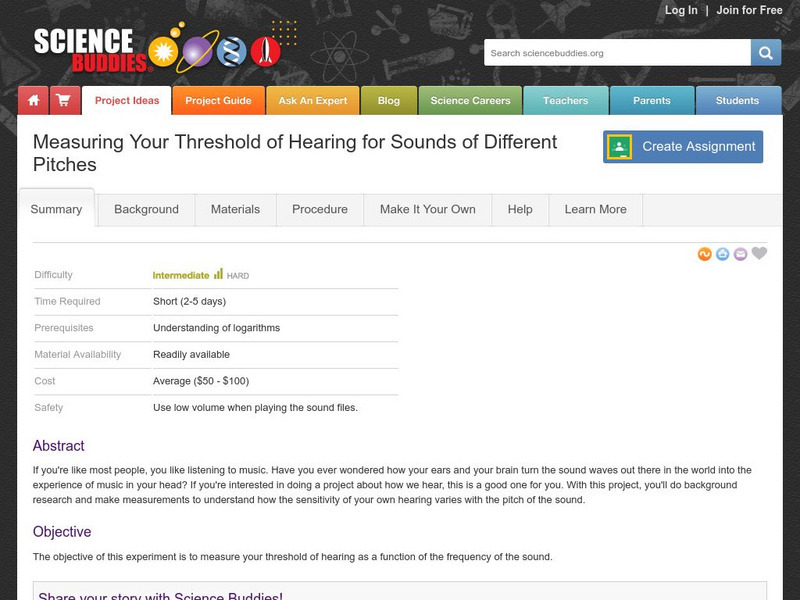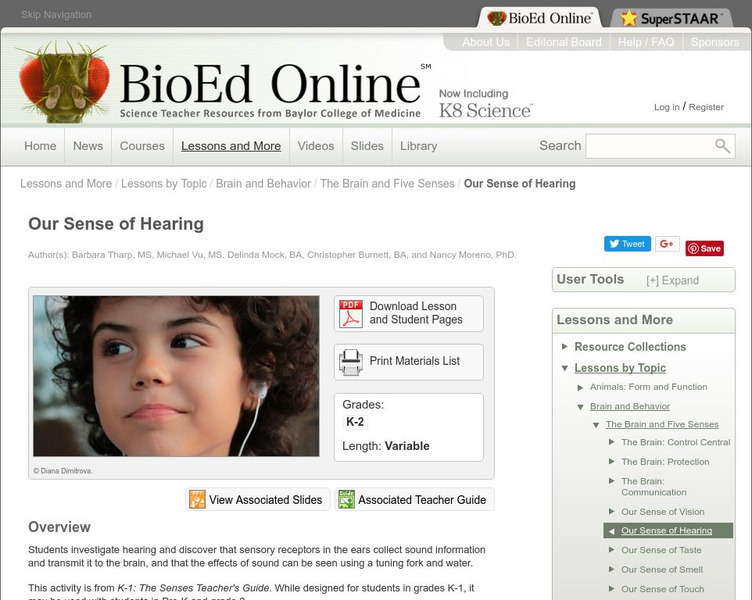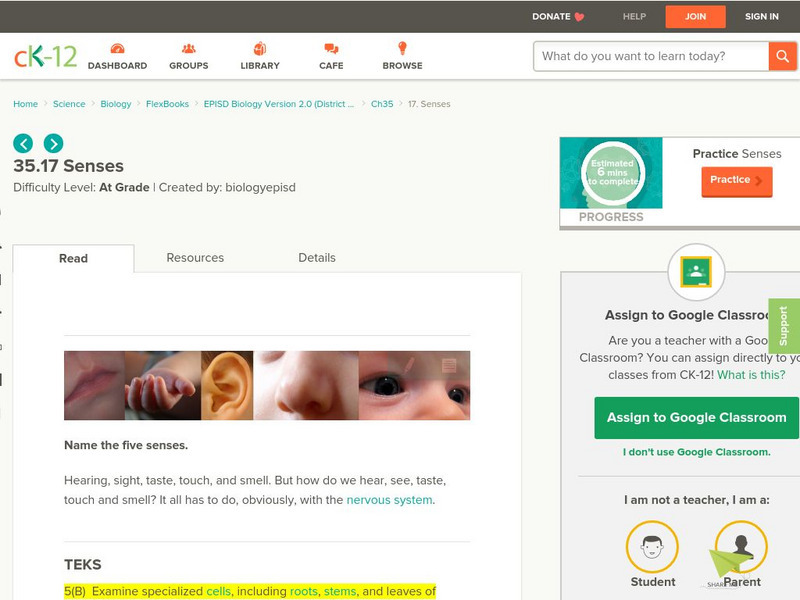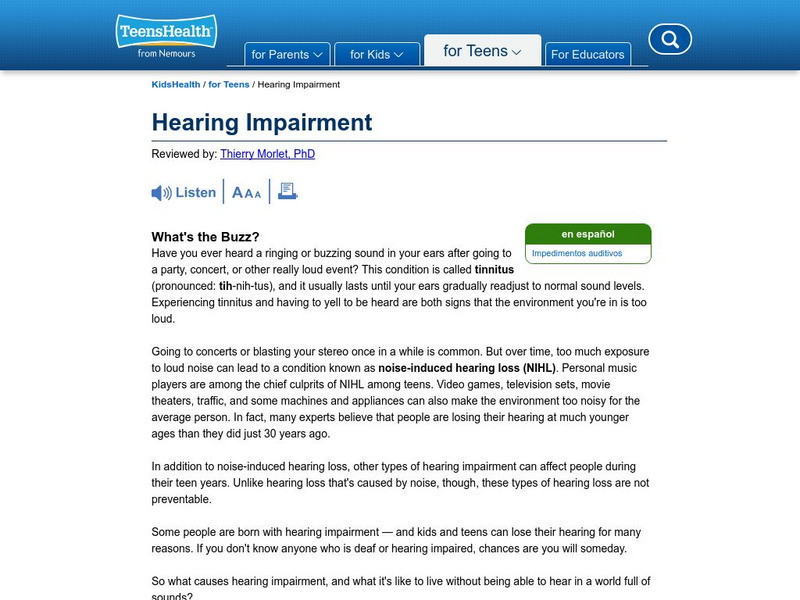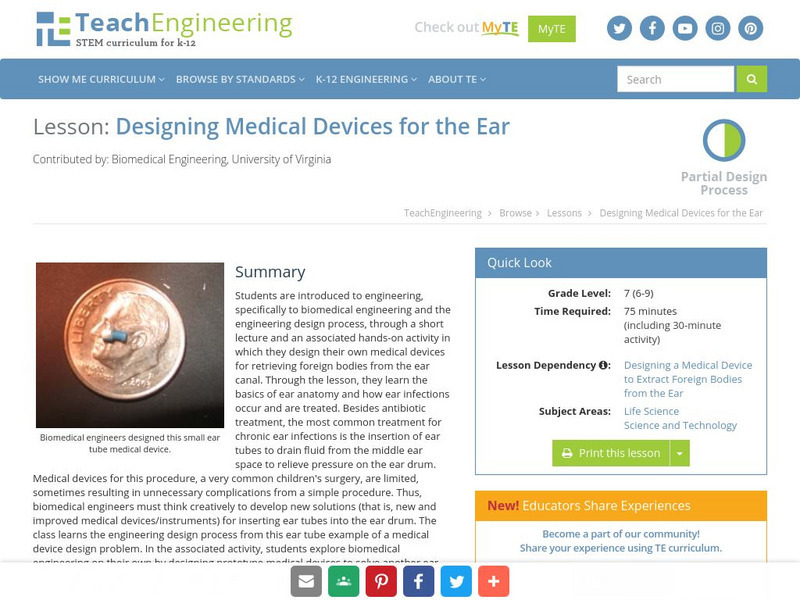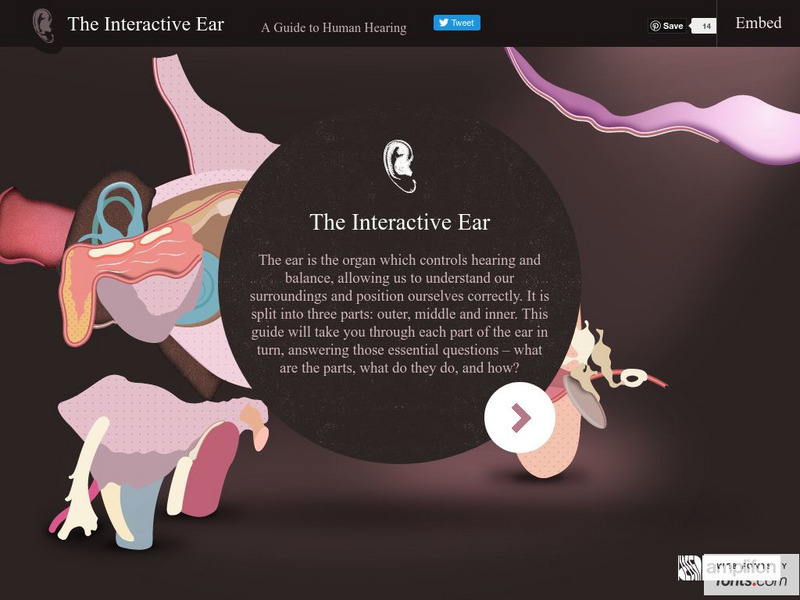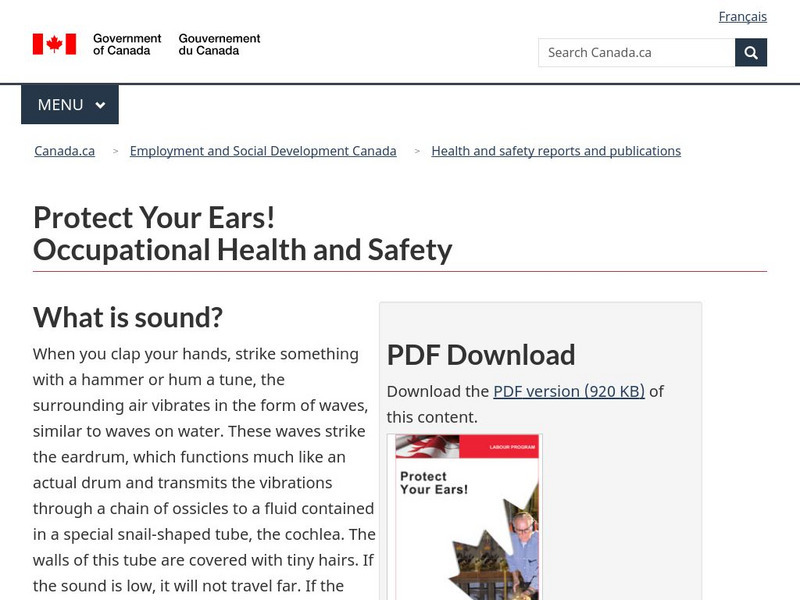Aetna Intelihealth
Aetna: Inteli Health: How the Five Senses Change With Age
This article discusses the link between anatomical changes related to aging and sensory loss. Delves into the problems associated with each of the five senses.
PBS
Pbs Learning Media: Moriussaq: A Case Study in Hearing Loss
This video segment follows neurophysiologist Allen Counter as he studies an epidemic of hearing loss in Moriussaq, Greenland, one of the quietest places on Earth. Footage from NOVA: "Mystery of the Senses: Hearing."
Science Buddies
Science Buddies: Extreme Sounds: Lessons in a Noisy World
Just how loud does a sound have to be for us to hear it? And how loud is too loud for our ears? Learn to measure levels of sound in this project, and discover the amazing auditory range your ears can detect in the noisy world around you.
Science Buddies
Science Buddies: Measuring Your Threshold of Hearing
How your ears and your brain turn the sound waves out there in the world into the experience of music in your head, remains a mystery to many, but yet we all experience and even enjoy sounds and music. If you're interested in doing a...
Estrella Mountain Community College
Estrella Mountain Community College: The Nervous System
This online biology book chapter offers definitions and descriptions of the nervous system's components.
Free Reading
Free Reading: Guess What I'm Thinking?: Initial Sound Accuracy
A version of the "20 Questions" game. The instructor tells the class he is thinking of something that starts with, for example, /b/. The students have to come up with what the teacher is thinking of.
BioEd Online
Bio Ed Online: The Senses
In the following activities students can learn about the basic characteristics and structures of the brain, skull and sensory system; investigate sight, hearing, smell, taste and touch; and discover how the brain and the senses are...
BioEd Online
Bio Ed Online: Our Sense of Hearing
What causes sound? How do our ears detect sound? How do our brains recognize sound? In this instructional activity students investigate hearing and discover that sensory receptors in the ears collect sound information and transmit it to...
Society for Science and the Public
Science News for Students: 'Ringing' in the Ears May Signal Serious Ear Damage
Often waking up after a concert our ears are buzzing. A persistent ringing in the ears, also known as tinnitus, has become common in teens - and may point to eventual, permanent hearing loss.
Other
Michigan Ear Institute: Eustachian Tube Problems [Pdf]
Functions of the Eustachian Tube, discusses disease states of the Eustachian Tube, treatments.
The Franklin Institute
Franklin Institute: Music to Our Ears
Part of a larger site on the armonica, an instrument created by Ben Franklin. Introduce yourself to the human ear. This section looks at how sound is collected and transmitted and provides diagrams of the parts of the auditory pathway...
CK-12 Foundation
Ck 12: Senses
[Free Registration/Login may be required to access all resource tools.] The following online tutorial explains how sensory stimuli are perceived and interpreted.
Georgia Department of Education
Ga Virtual Learning: Anatomy and Physiology: Senses
Through informational text with printable notes, animations, video clips, and practice problems students discover the function of the sensory structures in the human body.
Curated OER
Kids Health: Hearing Impairment Information
A very extensive site providing details on hearing and hearing impairment. Includes a diagram of the ear with details on how the ear works, as well as a definition, causes, diagnosis, treatment, and prevention of hearing impairment.
Curated OER
Kids Health: Let's Hear It for the Ear!
Use this site to learn about the body part that is responsible for collecting sounds, processing them and sending them to your brain. See all the inner workings of the ear through great diagrams. Available in Spanish.
TeachEngineering
Teach Engineering: Hearing: How Do Our Ears Work?
Students learn about the anatomy of the ear and how the ears work as a sound sensor. Ear anatomy parts and structures are explained in detail, as well as how sound is transmitted mechanically and then electrically through them to the...
TeachEngineering
Teach Engineering: My Mechanical Ear Can Hear!
Students are introduced to various types of hearing impairments and the types of biomedical devices that engineers have designed to aid people with this physical disability.
TeachEngineering
Teach Engineering: Human and Robot Sensors
Students are provided with a rigorous background in human "sensors" (including information on the main five senses, sensor anatomies, and nervous system process) and their engineering equivalents, setting the stage for three associated...
TeachEngineering
Teach Engineering: How Does a Sound Sensor Work?
Students learn about how sound sensors work, reinforcing their similarities to the human sense of hearing. This instructional activity and its associated activity enable students to appreciate how robots can take sensor input and use it...
TeachEngineering
Teach Engineering: Designing Medical Devices for the Ear
Students are introduced to biomedical engineering and the engineering design process through a short lecture and an activity in which they design their own medical devices for retrieving foreign bodies from the ear canal. They learn...
Other
Deafness Research Uk: How the Ear Works
A collection of several images explains how the ear makes us hear sound.
Other
Amplifon: Interactive Ear: A Guide to Human Hearing
The Interactive Ear is a whole ear model which allows the user to explore all the inner-workings of the human ear.
Government of Canada
Government of Canada: Protect Your Ears!
Occupational noise is a common health hazard in industry. Human Resources and Social Development Canada presents important information for the country's workers about how to deal with this issue. Learn what you can do about workplace...
Unite for Literacy
Unite for Literacy: Healthy Me: I Hear
Look at all the things a child can hear and listen to each day. Book includes audio narration in 19 additional languages with text in English.




